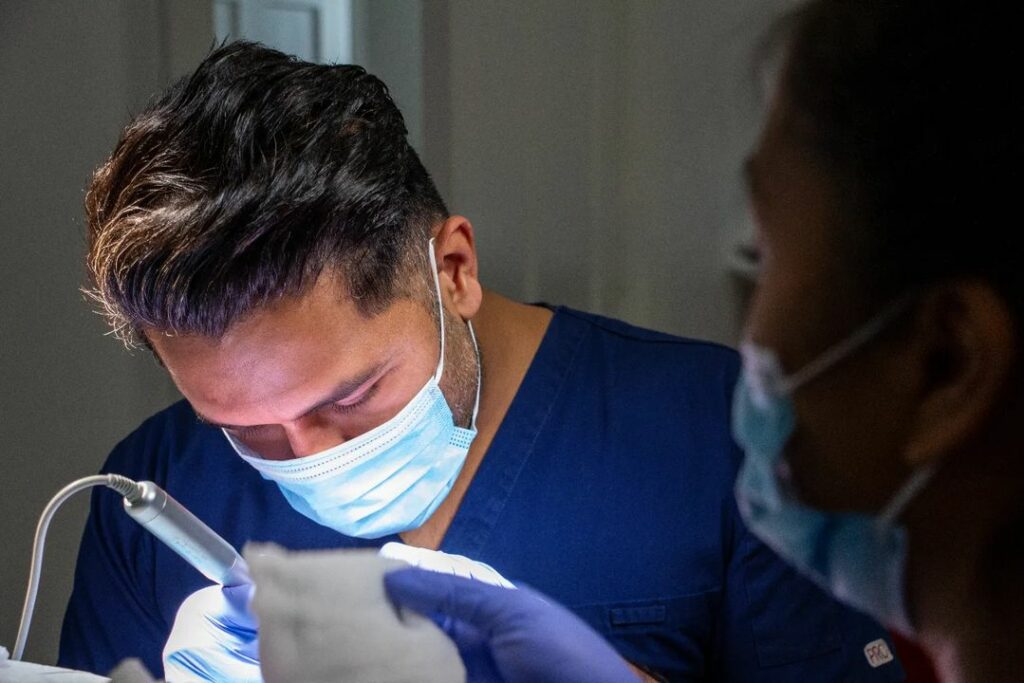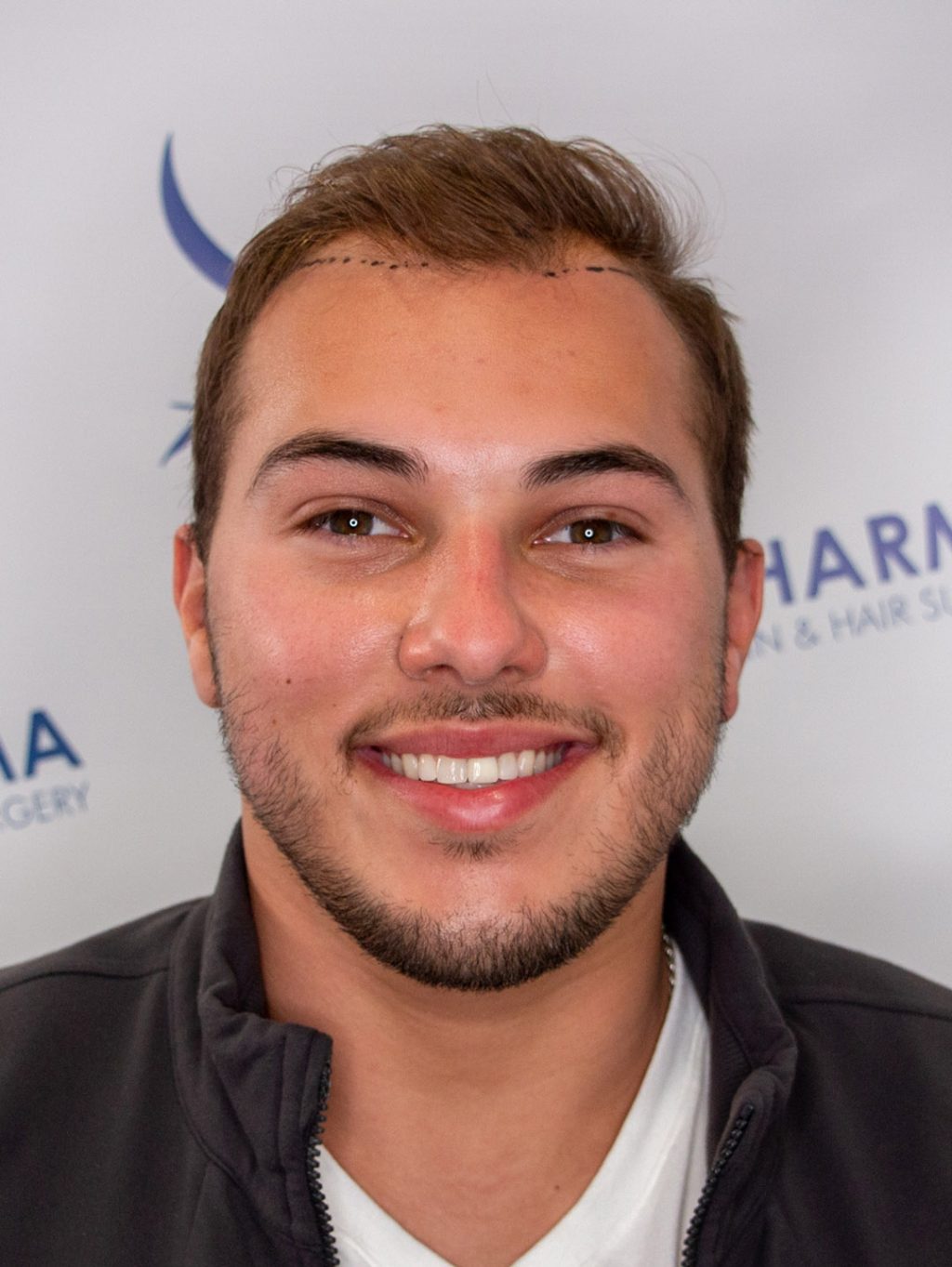Is a pink scalp normal after hair transplant surgery?
Yes. Your scalp is expected to be quite red or pink following your hair transplant procedure. The healing process requires inflammation and swelling at both the recipient site and donor area. Due to small amounts of bleeding around each individual incision it is also expected to scab up around the newly relocated follicles. This may look like tiny dark red dots on your head. The recipient site will be open air and never covered with a bandage, this will cause the healing to take a bit longer then the donor site.
Tissue from the transplanted follicles may continue growing for a short time before falling out with the surrounding scabbing. This is completely normal and nothing to be concerned about. The follicle itself is implanted beneath the skin and will start to grow back within the next 3-5 months.
We want you to know exactly what to expect following your hair restoration surgery.
Below are some photos of a longer then average recovery period. For patients with fair skin types the redness will persist for a longer period of time. Another important factor that can cause a longer recovery time is your body’s natural healing abilities. Everyone responds differently to surgery and it is important to be aware of the minimum and maximum recovery timelines.
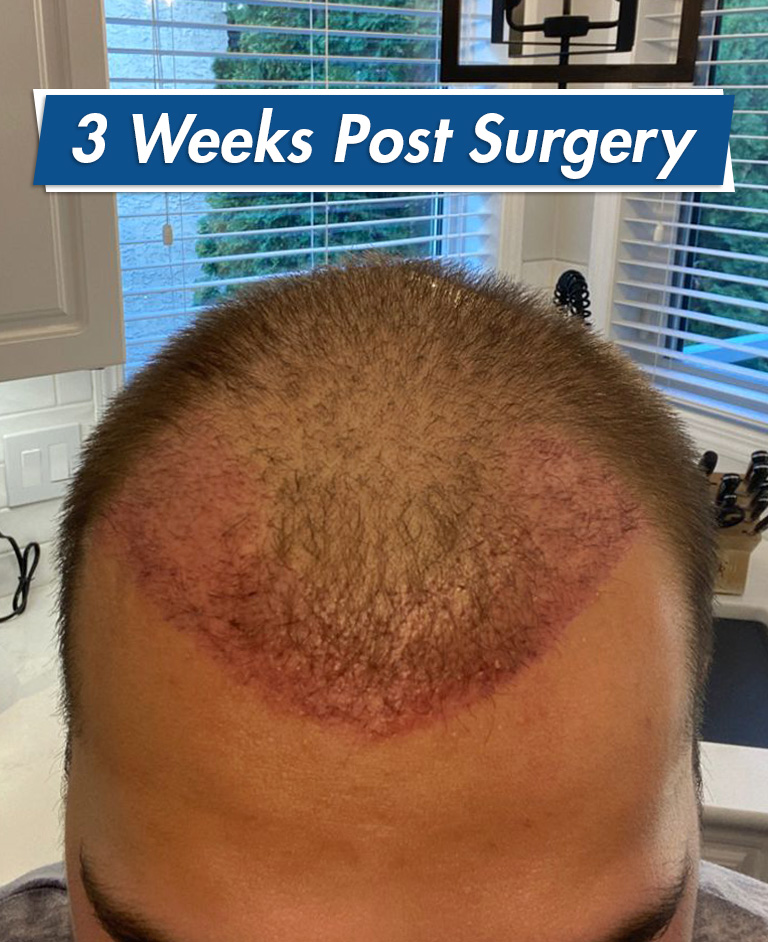
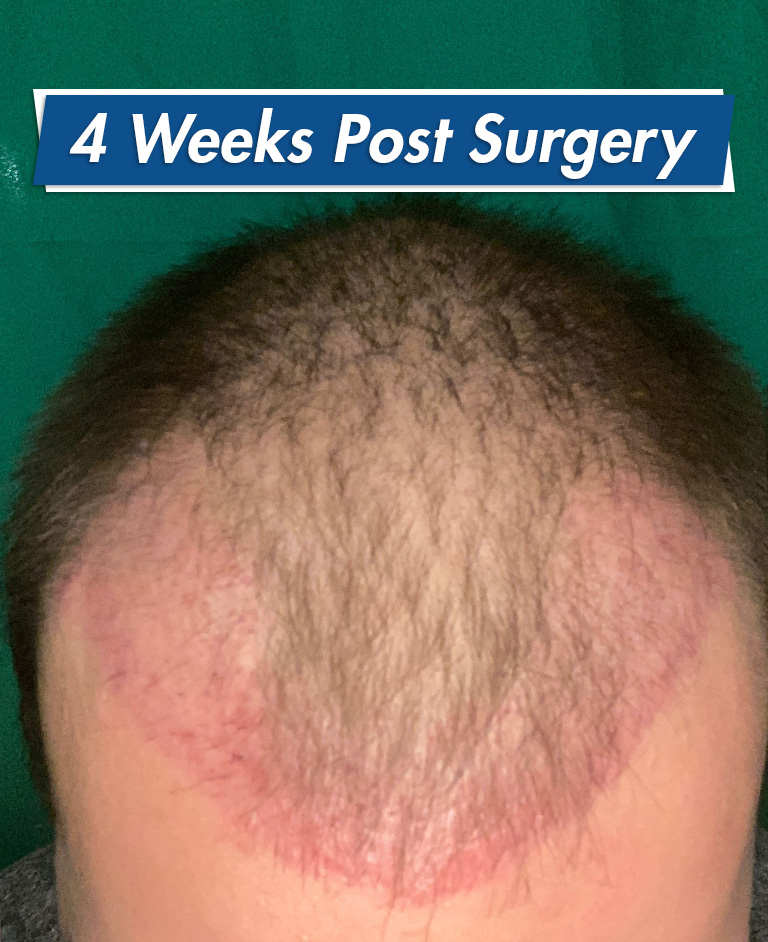
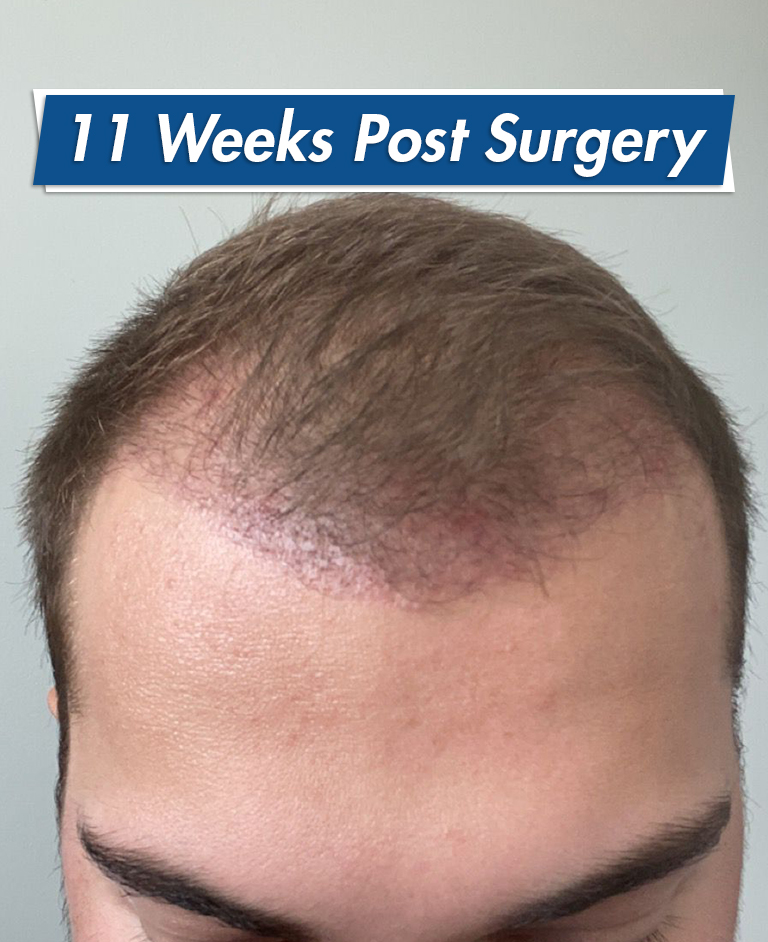
It is important to understand that irritation and redness follows any invasive procedure.
The incisions made during your hair transplant may be very small in size, but we are often making over 2,000 of them in a relatively short period of time. Everyone’s healing response time is different and we want each patient to be aware of how long their downtime may be.
How long will my scalp be red after hair transplant surgery?
There are many factors that will determine how long your scalp will be red following surgery. Lighter skin tones, esspecially pale patients, will experience redness for the longest amount of time. Those with darker skin will likely have their skin return to a normal hue within 2-3 weeks. Other patients who are more prone to slow healing, or inflammation will need additional time. In the worst cases it can take anywhere from 2-4 months. The size and duration of redness is also tied to the number of transplanted grafts. Larger surgeries tend to have redness for a longer period of time.
Is the redness permanent after a hair transplant?
No, it is never permanent. Some patients will experience numbness or tenderness that can last upwards of a year, but this is very uncommon.
Scalp itchiness after hair transplant
Due to the tightly made incisions many patients report itchiness following surgery. This can begin anywhere 1-3 weeks post-op as the hair begins to scab and heal over. Itching can then again start around the 1-month mark as new hairs begin piecing the scalp and begin to grow.
Dr. Sharma may recommend certain shampoos or exfoliators for use after the recovery period (7 days) to help with the itchiness. These often contain small exfoliating pieces that will help to break up the dry skin, assisting the new hairs to break through the scalp. It is critical to avoid itching the recipient site post-transplant. Itching can cause infection, bleeding, or irritation – and in the worst cases, the interruption of follicle growth.
Nurse Cindy answers your questions
Watch nurse Cindy cover some commonly asked questions about pinkness following hair transplant surgery.
How can I reduce redness after a hair transplant?
Following the post-care instructions given you after your hair transplant at The Sharma Clinic is integral to the fastest recovery possible. Here are some additional steps you may take after the 7 days of post-care.
- Avoid showers under extremely hot temperatures.
- Prevent direct exposure to sun for 30 days following surgery.
- Avoid chlorinated pools and hot tubs for 1 month post-surgery.
- Apply an ice pack or cold towel to the area once the post-care is complete.
- Avoid picking at the scabs with your fingernails. We recommend only using the pads of your fingers when massaging them away.
- Try to stay well-hydrated, this will help your skins natural healing abilities.
- Sleeping on your back or in a slightly elevated position will alleviate pressure on the recipient site.
How can I tell if my new hair is growing?
Unfortunately patience is the only way to know for sure. Some hairs will remain dormant for up to a year following the surgery. This means that the results seen by the one-year mark are not representative of the final product. Some patients will notice pimples and tiny red marks throughout the scalp. This is merely excess oils and dead tissue being brought to the surface while the follicles slowly grow. This may be mitigated by exfoliating scrubs but is completely normal.
When will the back of my head look normal again after a hair transplant?
Anywhere from 7-14 days. The donor site, found at the back of your head near the top of your neck, will be covered with a bandage for three days. This area tends to heal very quickly due to the extremely small incisions (roughly 0.8mm in diameter). Although you may see a small amount of scabbing, when kept clean the donor site will have ample time to heal during your downtime often looking unnoticeable come the 10 days mark.
Hair Transplant FAQ
Scabbing following your Hair Transplant
Starting on day 8 post-transplant and as late as day 9.
If you have any remaining scabs after day 7 you can use moderate pressure with the pads of your finger to massage the scabs until they release.
Do not use your fingernails to pick or pull the scabs off, merely massage the scabbing to soften the area. Prying or picking at the scabs may cause excess bleeding so be gentle.
We don’t recommend doing it all in one day. The process can be completed once daily, over multiple days. There is no set date to remove all of them but on average a vast majority of the scabs should be removed by day 10 or 11.
It is important to follow this advice because if you do not remove the scabbing on time you are at higher risk for infection (dermatitis).
By day three through five the grafts will have attached themselves securely under the scalp. It is important to give each follicle time to attach to the surrounding blood vessels before working the scab away. Doing this too early can harm the graft and prolong the recovery stage.
Book now
Talk to a Hair Transplant Expert in Edmonton, Alberta
Contact us for a free virtual hair loss consultation and get started on your transformation today.
